A Week in the Life of the Museum Fellows
The Frankenthaler Fellowship, also known as Museum Fellows Term, is an extension of Bennington College’s Field Work Term. Beginning with Field Work Term and ending with the close of the Spring term, the program gives a small group of students who are interested in the art world—regardless of their area of study—the opportunity to live, work, and study in New York City for 20 weeks.
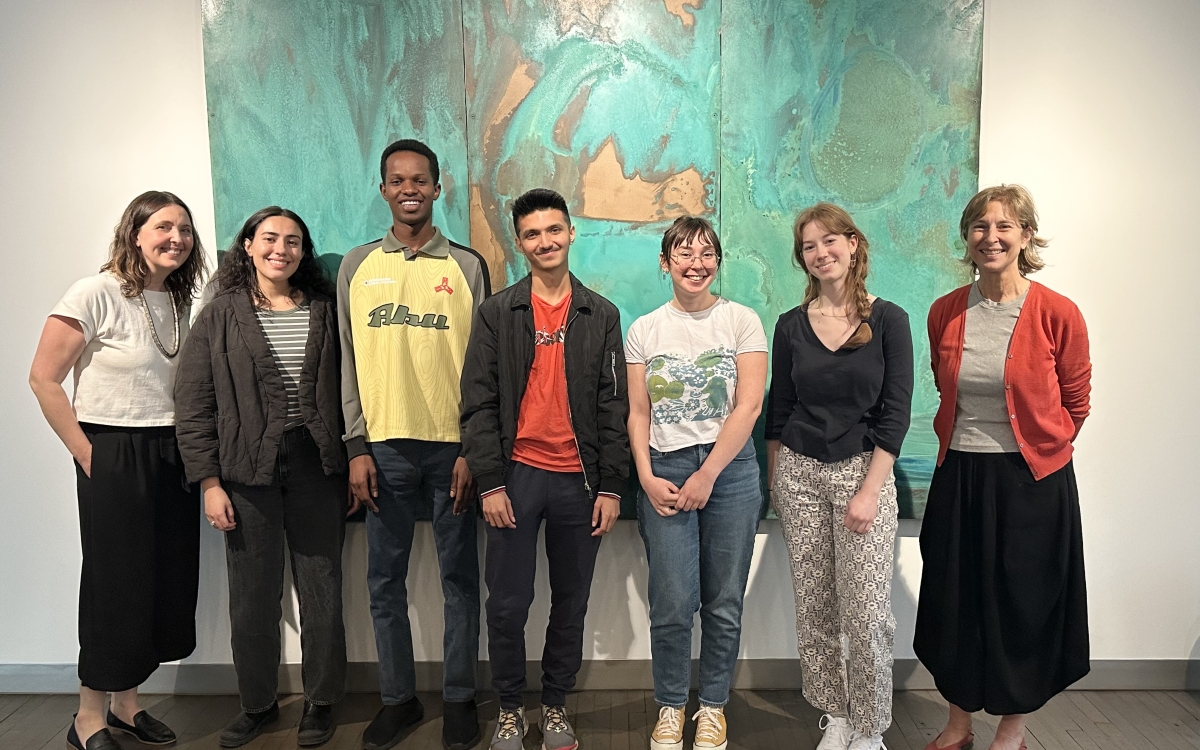
Through support from the Helen Frankenthaler Foundation, students intern at the city’s most iconic arts and culture organizations two days a week while reading, taking classes, and visiting museums, galleries, artists, and other professionals in the field. In addition to making progress toward their Plan, students get a front-row 360-degree view of the New York art world while building their resumes and making connections within the arts community.
Many students note the extraordinary privilege of witnessing the New York art world up close and their surprise at the array of art-associated careers. The experience prepares students for jobs in art, museums, and archives, while also cultivating transferable skills applicable both within and outside the arts.
We checked in with four Frankenthaler Fellows during late April 2023. They answered three questions about their experiences and the ways they were able to get up-close and personal with the New York art world.
Meet the Fellows

Ahmed Amar ’24 is from Senegal. He is studying Political Economy, Public Action, and Japanese. For Museum Term, he was interning at the New Museum of Contemporary Arts.

Gaurav Aung ’24 studies Literature at Bennington. He was an intern at Skowhegan and is from Myanmar.

Daisy Billington ’24, of California, is studying Visual Arts and Theater at Bennington. She was an intern with Meagan Mattingly ’00 in the Learning & Engagement Department at Dia Art Foundation in Chelsea.

Julia Henck ’24, of Connecticut, studies Art History and Anthropology at Bennington. She was an intern at The Studio Museum in Harlem.
What was the best or most interesting thing you did or learned this week in relation to your work within the museum or organization?
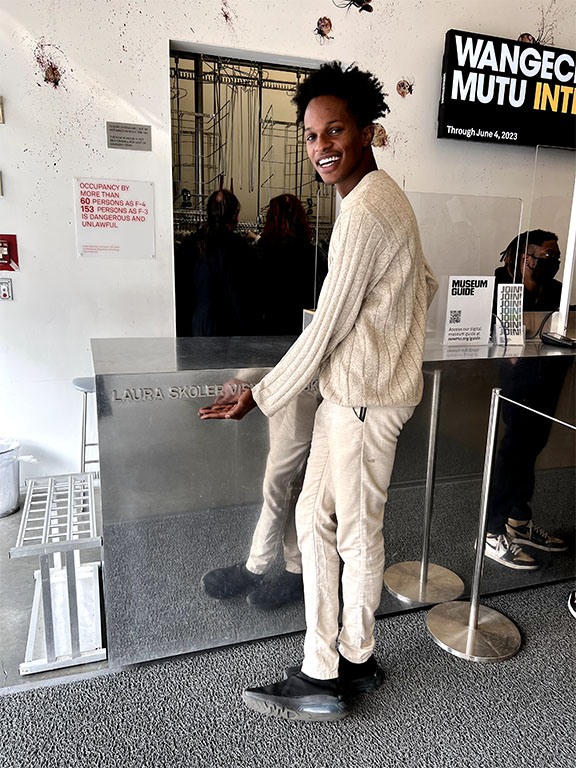
Ahmed: This week, I'm working on preparing two tours of the Wanagechi Mutu exhibit on view at the museum right now in French. One is for collectors from Paris, and the other is for museum professionals from Marseille. I am working to connect the Afrofuturism theme with five selected works of the exhibit. It's been fun relating my own “African of the Diaspora” identity to the work of Mutu.
I think Wangechi Mutu's work sums up fascinating questions of race and gender and inclusion. It reflects this idea that all humans and living beings are intertwined, that we are beyond pre-existing societal norms, colonialism, heritage... that none is above anyone, and all cultures matter.
Gaurav: Working alongside and following the directors of the institution around has to be one of my favorite aspects of the job. They are both fantastic at what they do, and I get to witness in real time how the ideology and artistic trajectory of Skowhegan is being shaped. This experience has led to a realization of what attributes are most important not only for a career in arts but for professional life in general. Overwhelmingly, I've found that being able to think on your feet, communicate, and resolve conflicts in a timely manner is far more important than any one technical skill one could have.
Daisy: As part of my self-directed work in the Learning & Engagement department, I had a goal of crafting a lesson plan around Chryssa and her work on display in the Dia Chelsea galleries. After a month of researching, attending the gallery walkthrough with the curators, spending my own time with the artwork, and collaborating with another L&E intern, I designed a lesson plan geared towards the Dia Teens program, a group of 15 freshmen through seniors from various NYC high schools.
It was meaningful to see the lesson I imagined in my head come to life. The teens were excited about being in the galleries and interacting with a female artist with a connection to New York City. It also helped me to realize what works and doesn't work when leading a group of teenagers in discussion and during studio time around a topic that is new to them.
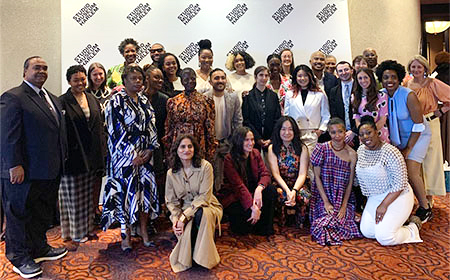
Julia: On Friday, I had the opportunity to go to the Studio Museum’s Spring Luncheon, which is a yearly benefit hosted by the Development Department to raise money for the museum. This event allowed me not only to see the behind-the-scenes of an institutional event but it also gave me the opportunity to sit down and talk to my coworkers about their educational and professional experiences, as well as just getting to know them outside of the office. I also got to interact with the major donors and hear about their relationships to the museum and their work as executives, curators, artists, and benefactors.
(Photo above:) "This is a photo of all the staff who were at the event—from the Executive, Development, Curatorial, and Education Departments—with Thelma Golden, the Executive Director and Chief Curator of the Studio Museum. It encapsulates both how excited we all were to be there and how good we looked!" - Julia Henck
What was the most interesting thing you did or learned this week in relation to living in or experiencing the city?
Ahmed: There are many cultural hubs, and finding your people is not hard. I am glad I was introduced to the ballroom culture in the city. I am able to express my queer identity in a very meaningful way.
Gaurav: I learned recently that there is more wealth concentrated in the institutions we visit as part of the program—and the art world at large—than there is in my entire country. The epiphany came during a recent visit to the Met. It was impactful because it was the first time I realized just how close to ‘the powers that be” I was. There is so much political power concentrated in NYC, and to see it flow into and out of the art world has been incredibly interesting.
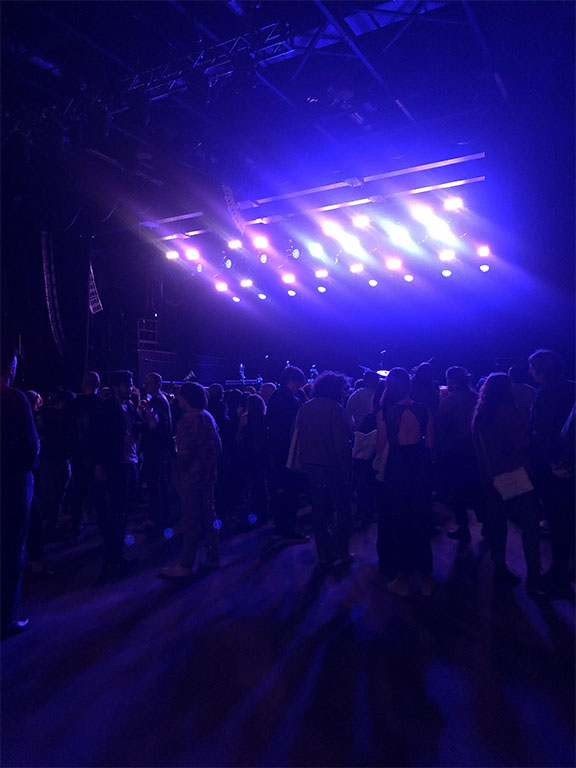
Daisy: I’d been looking for free theater programs and chances to perform again, so when I learned about Tuesdays@9, with the Naked Angels Theater Company at Kraine Theater, it was the perfect opportunity. I was cast on the spot to be part of a cold reading of someone’s work-in-progress play. I felt welcomed and supported, especially since it was my first time going. Most people knew each other or had gone before; it felt like a genuinely nice community of artists all looking to have fun and share their art. I also went to a concert for one of my favorite musicians in Brooklyn. The tickets were cheap, the venue was so cool, and the music was even better.
Julia: I stumbled upon Fredericks & Freiser gallery in Chelsea after class and got a chance to see Hannah Lupton Reinhard’s show, Shekinah, Shiksas, and Other Nice Jewish Girls. I’m really interested in feminist and hyper feminine aesthetics, as well as religion, and it was really awesome to see her work combine and challenge bright girly colors, rhinestones, and the Old Testament.
I’m still trying to finalize my senior work (an art history thesis) in a way that combines religion and anthropology with the art that I’m interested in, and these paintings kind of did it for me. They were both visually really appealing and nostalgic but also intellectually challenging in the way that they portrayed femininity and Judaism.
What was the most interesting thing you did or learned this week in relation to your coursework?
Ahmed: I wrote an essay about museums using labels as a mediation tool between them and the visitors. I was impressed to learn that museums put a much more focus on helping the visitor understand a specific artwork than describing the artwork itself. Many museums are shifting their way of presenting artworks to the public. This made me wonder if the museums as institutions are still in phase with their primary purposes.
Gaurav: As part of my final project, I'm in the process of designing a hypothetical exhibition, which has been a lot of fun. It has helped me apply a lot of what I've learned these past 5 months into a culminating project.
Daisy: I've been reading and learning about Yoko Ono's book Grapefruit which is a collection of short 'event scores' (kind of like instructions or prompts for various artistic practices or ways of thinking). I've been trying to figure out how to connect all of my interests into one concept or project for my senior work, so this has been a great introduction to a way of making and sharing art with a wider audience. I ended up using one of Ono's poems as lyrics for a song to experiment what it's like to place found text in the context of my own melodies I've come up with.
Julia: I have been reading Glitch Feminism, which is a really exciting and good book about the direction of intersectional feminism in the art world. It has a lot of ideas and proposals for how change makers can be effective in making space for themselves and disrupting the systems in place.
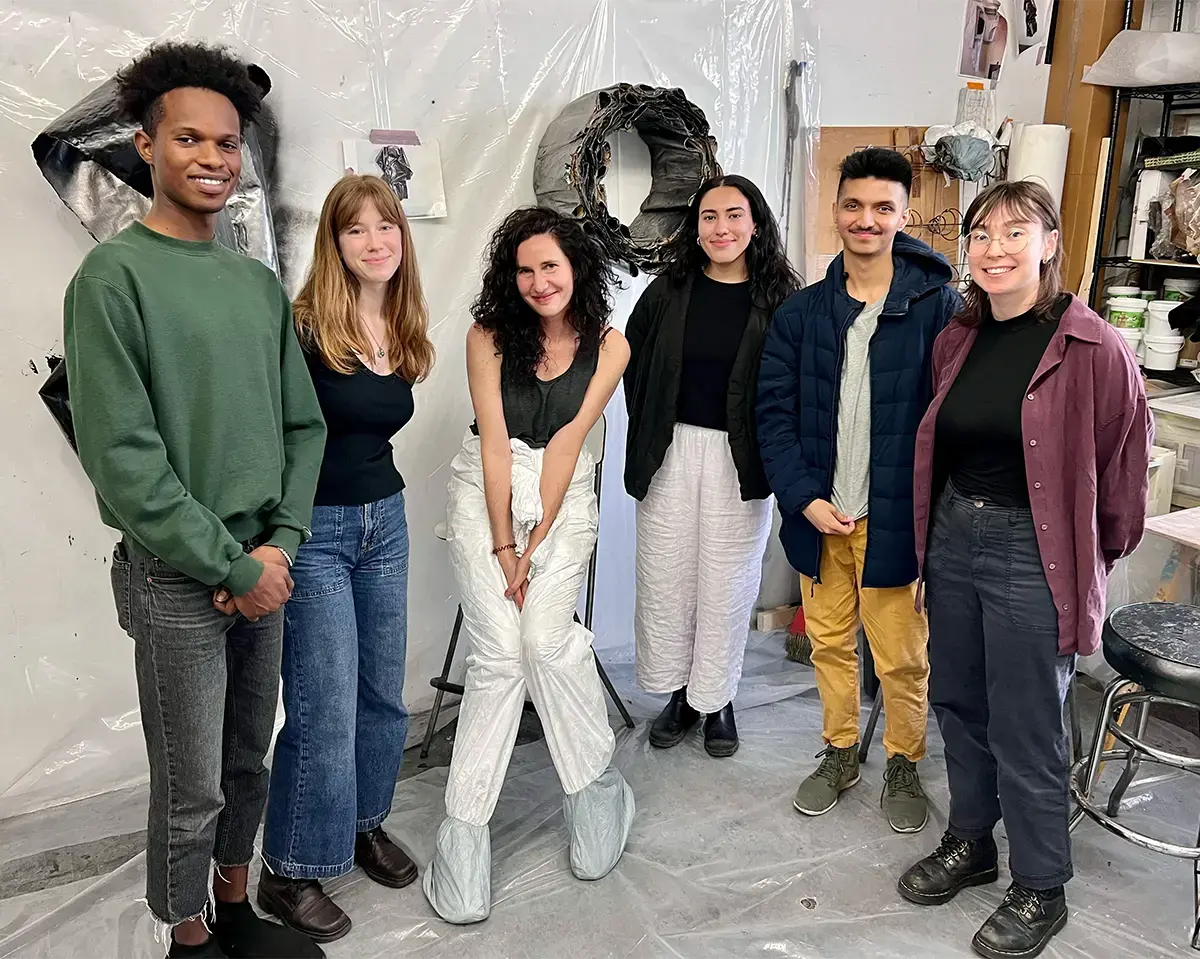
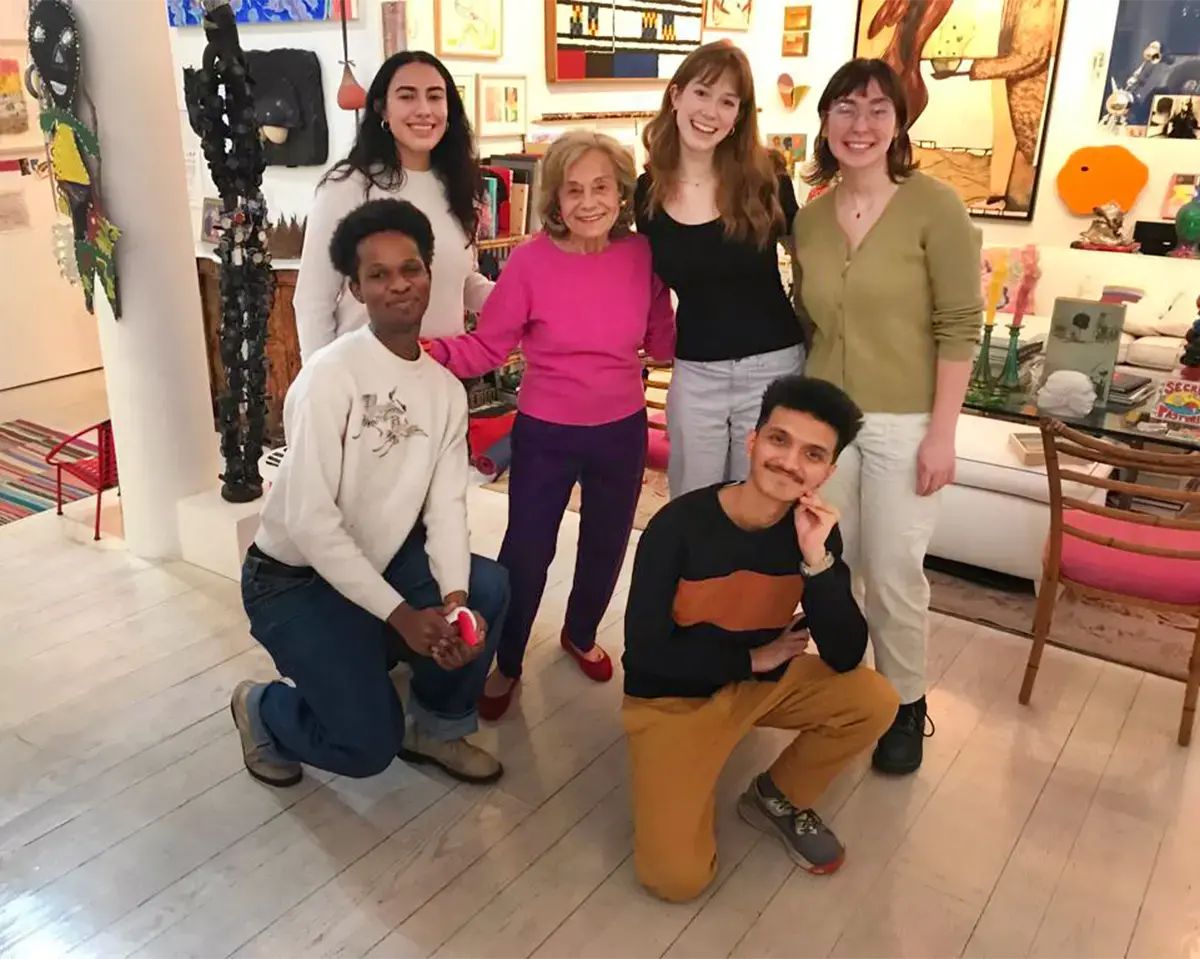
For more information about the Museum Fellows Term, please visit the program website.